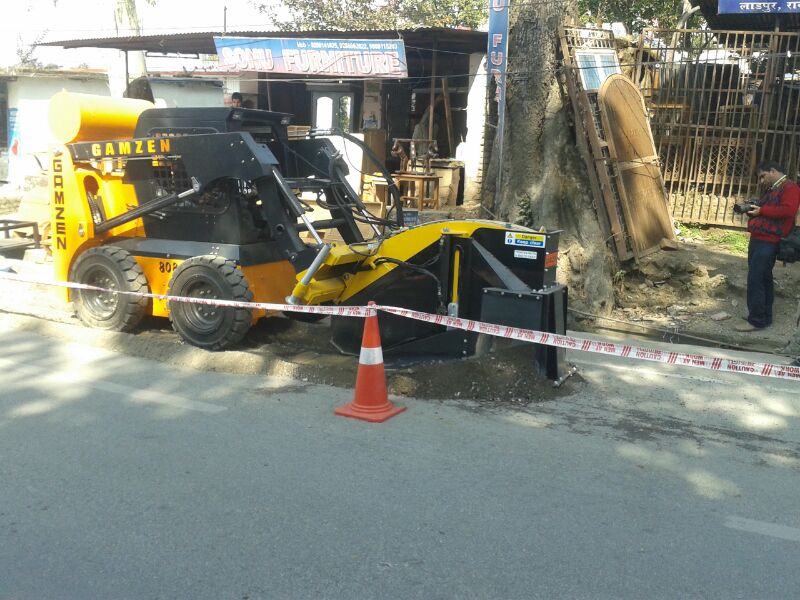How to Choose the Right Skid Steer Trencher for Your Needs
Skid steer trenchers are powerful excavation tools used to dig trenches quickly and efficiently. They are designed to attach to skid steer loaders and provide a versatile, efficient way to excavate soil in a range of different applications, from landscaping to construction. Choosing the right skid steer trencher for your needs is important to ensure your project is completed on time and within budget.
In this article, we will discuss the key factors to consider when choosing the right skid steer trencher for your needs. We’ll look at how to identify your project requirements, understand the different types of trenchers available, choose the right size and power, evaluate attachment options, and consider your budget and timeline. By the end of this article, you’ll have a better understanding of what to look for when choosing a skid steer trencher and be able to make an informed decision that will help you complete your project successfully.
Consider Your Project Needs
Before choosing a skid steer trencher, it’s important to identify your project requirements. This will help you choose the right tool for the job and ensure that you complete your project on time and within budget.
Some factors to consider when identifying your project requirements include:
- Trench depth and width: The depth and width of the trench will impact the type of trencher you need. If you need to dig a deep or wide trench, you may need a larger and more powerful trencher.
- Soil type: Different trenchers are designed to work with different soil types. Some trenchers work better in hard, compacted soils, while others are designed for softer, looser soils.
- Length of the trench: The length of the trench will impact the amount of time and effort required to complete the project. If you need to dig a long trench, you may need a trencher that is designed for high-volume excavation.
- Other project requirements: Other project requirements may include the need for precise excavation, the need to avoid damaging existing utilities or structures, or the need to work in tight spaces.
By taking the time to identify your project requirements, you can choose the right skid steer trencher for the job and ensure that you complete your project successfully.
Understand the Different Types of Trenchers
There are different types of trenchers available on the market, each with its own advantages and disadvantages. By understanding the different types of trenchers, you can choose the one that is best suited to your project needs.
- Standard vs. High-flow Trenchers
Standard trenchers are designed to operate at a lower hydraulic flow rate, making them suitable for smaller skid steer loaders. High-flow trenchers, on the other hand, require a larger hydraulic flow rate and are designed for larger skid steer loaders. High-flow trenchers are typically more powerful and can dig deeper, wider, and faster than standard trenchers. If you have a larger skid steer loader and need to dig deep or wide trenches quickly, a high-flow trencher may be the best choice.
- Chain, Wheel, and Auger Trenchers
Chain trenchers are the most common type of trencher. They use a digging chain to cut through soil and are suitable for excavating soft to medium-hard soils. They are relatively easy to operate and maintain and are a popular choice for landscapers and contractors. However, they are not ideal for hard or rocky soils.
Wheel trenchers are designed for harder soils and can be used to dig trenches in rocky or compacted soils. They use a rotating wheel with cutting teeth to cut through the soil. However, they are less precise than chain trenchers and may require more effort to operate.
Auger trenchers use a rotating auger to excavate soil. They are ideal for digging narrow, deep trenches and are a good choice for utility and irrigation installations. However, they are slower than chain or wheel trenchers and may not be suitable for larger excavation projects.
By understanding the different types of trenchers, you can choose the one that is best suited to your project needs. Consider the soil type, trench width and depth, and other project requirements when choosing a trencher.
Choose the Right Size and Power
Once you’ve identified your project requirements and the type of trencher you need, it’s important to choose the right size and power of trencher for your needs. Choosing a trencher that is too small or underpowered can lead to delays and additional costs, while choosing one that is too large or overpowered can waste money and resources.
Factors to consider when choosing the right size and power of trencher include:
- Soil type: Different soil types require different levels of power to excavate. Hard, compacted soils will require a more powerful trencher than soft, loamy soils.
- Trench length and width: The length and width of the trench will impact the size and power of the trencher required. If you need to dig a long or wide trench, you may need a larger and more powerful trencher.
- Depth of the trench: The depth of the trench will also impact the size and power of the trencher required. If you need to dig a deep trench, you may need a larger and more powerful trencher.
- Other project requirements: Other project requirements, such as the need for precise excavation or the need to avoid damaging existing utilities or structures, may also impact the size and power of the trencher required.
By taking these factors into consideration, you can choose the right size and power of trencher for your needs. It’s important to ensure that your trencher has enough power to excavate the soil type and trench size required for your project, while not being too large or overpowered. This will help you complete your project efficiently and effectively.
Evaluate Attachment Options
Choosing the right attachment for your skid steer trencher is an important consideration when selecting a trencher for your project. The right attachment can help you achieve more precise and efficient excavation, while the wrong attachment can lead to delays and additional costs.
Here are some common attachment options for skid steer trenchers:
- Backhoe: A backhoe attachment allows you to excavate soil and move it away from the trench. It’s a versatile attachment that can be used for a wide range of excavation projects, from digging trenches to removing debris.
- Bucket: A bucket attachment is designed for moving and lifting loose materials, such as soil or rocks. It’s a useful attachment for projects where you need to move large amounts of material away from the trench.
- Vibratory plow: A vibratory plow attachment is designed for installing underground utilities, such as pipes or cables. It uses a vibrating blade to cut through soil and create a trench for the utility to be installed.
- Auger: An auger attachment is used for drilling holes in the ground. It’s a useful attachment for projects where you need to install fence posts or other structures.
When choosing an attachment for your skid steer trencher, consider the specific requirements of your project. For example, if you need to excavate and move large amounts of soil, a backhoe attachment may be the best choice. If you need to install underground utilities, a vibratory plow attachment may be more appropriate.
Choosing the right attachment can help you complete your project efficiently and effectively, so it’s important to evaluate your options carefully.
Consider Your Budget and Timeline
When choosing the right skid steer trencher for your needs, it’s important to balance your project requirements with your budget and timeline. While it’s important to select a trencher that can meet your project needs, you also need to ensure that the cost and timeline are reasonable and realistic.
Here are some factors to consider when evaluating the cost and timeline of your trenching project:
- Rental vs. purchase: If you only need a trencher for a short-term project, renting may be a more cost-effective option than purchasing a trencher outright.
- Type of trencher: Different types of trenchers have different costs associated with them. For example, a high-flow trencher may be more expensive than a standard trencher, but it may also allow you to complete your project more quickly.
- Attachment options: Some attachment options may add to the overall cost of the trencher rental or purchase. Consider which attachments you actually need for your project, and which ones you can do without.
- Soil type: The type of soil you are excavating can impact the overall cost and timeline of your project. Hard, compacted soils may require a more powerful trencher or additional attachments, which can increase the cost and timeline of the project.
By balancing your project needs with your budget and timeline, you can choose a trencher that meets your needs without breaking the bank or delaying your project. It’s important to evaluate all of the factors that can impact the cost and timeline of your project and choose the most appropriate options for your needs.
Conclusion
Choosing the right skid steer trencher for your needs is an important decision that requires careful consideration. By identifying your project requirements, understanding the different types of trenchers available, evaluating attachment options, and considering your budget and timeline, you can choose a trencher that meets your needs without breaking the bank or delaying your project.
Remember to take your time and carefully evaluate all of the factors that can impact the cost and timeline of your project. It’s important to choose a trencher that can handle your specific requirements and get the job done efficiently and effectively.
We hope this article has been helpful in guiding you through the process of choosing the right skid steer trencher for your needs. With the right trencher and attachment options, you can complete your project with confidence and ease.

